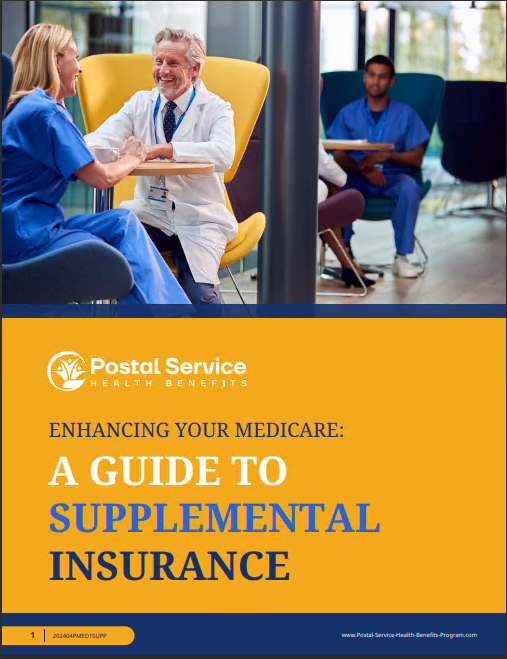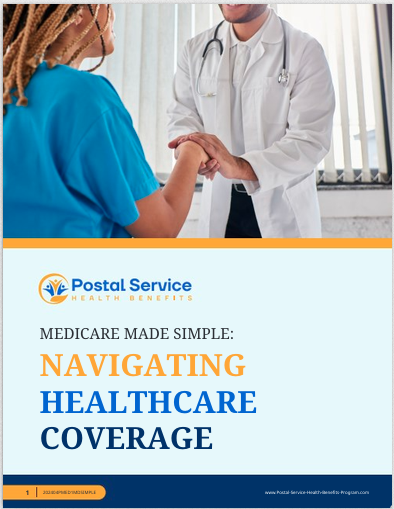Key Takeaways
-
The 2025 PSHB health plans streamline coverage options while enhancing benefits tailored to postal workers.
-
Understanding your PSHB choices can help you maximize health coverage and manage costs effectively.
A New Era for Postal Worker Health Benefits
If you’re a postal worker or annuitant, you’ve likely heard the buzz about the Postal Service Health Benefits (PSHB) program. As of January 1, 2025, PSHB officially replaces the Federal Employees Health Benefits (FEHB) program for postal employees, retirees, and their families. This change marks a major milestone in health coverage, promising tailored options that better meet the unique needs of postal workers. But what does this mean for you?
In this guide, we’ll walk you through the essentials of the 2025 PSHB program—what’s different, what stays the same, and how you can make the most of your benefits. Understanding the changes can help you make informed decisions that support your health and financial stability.
Understanding the Transition: What’s Changed?
The shift from FEHB to PSHB isn’t just a rebranding—it’s a comprehensive overhaul designed specifically for postal workers. Here are the key changes you need to know:
Exclusive Coverage Options
Unlike FEHB, which served all federal employees, PSHB focuses solely on the postal workforce. This specialization allows plans to address postal-specific needs, from better family coverage to improved integration with Medicare for retirees. By narrowing its scope, the PSHB program ensures that benefits are aligned with the demands of postal service careers, offering solutions that match your work-life realities.
Medicare Integration Requirements
If you’re a Medicare-eligible retiree, you’re now required to enroll in Medicare Part B to maintain PSHB coverage. While this might seem like an added expense, many PSHB plans waive deductibles and copayments for those enrolled in Medicare, creating potential savings in the long run. Furthermore, the integration ensures you have access to a seamless network of providers, reducing the administrative burden of juggling multiple plans.
Automatic Prescription Coverage
Prescription drug coverage is now integrated through Medicare Part D Employer Group Waiver Plans (EGWPs). This ensures comprehensive medication benefits with an annual out-of-pocket cap of $2,000, eliminating the infamous “donut hole” gap. With this cap, managing chronic conditions or unexpected medication costs becomes significantly more predictable, alleviating financial stress for you and your family.
Who Needs to Take Action?
Enrolled Employees
If you were already enrolled in FEHB, you’ve been automatically transitioned to a comparable PSHB plan. However, it’s crucial to review your plan details to ensure it still meets your needs. Open enrollment periods allow you to make changes if necessary. Taking time to assess your options ensures you’re not leaving potential savings or benefits on the table.
Retirees and Medicare-Eligible Members
For retirees who qualify for Medicare, enrolling in Part B is essential to maintaining your PSHB coverage. The integration aims to reduce overall costs by combining Medicare and PSHB benefits seamlessly. Don’t forget to coordinate with your plan administrator to understand how these benefits overlap.
Newly Eligible Individuals
If you’re new to federal employment or just became eligible for health benefits, the PSHB program offers a variety of plans to choose from during your first enrollment period. Use the resources available to compare plan features, costs, and networks before selecting coverage that matches your needs.
How PSHB Stands Out
The PSHB program isn’t just about simplifying administrative processes; it’s about providing you with better value and tailored benefits. Let’s break down some standout features:
Comprehensive Plan Options
PSHB plans provide broader choices for coverage, catering to a wide range of needs, from single individuals to large families. Whether you prioritize low out-of-pocket costs or extensive provider networks, there’s likely a plan that suits your lifestyle. With new options emerging, you can customize your health benefits to better align with both short-term needs and long-term goals.
Enhanced Preventive Care
Preventive services are a major focus, with most plans covering annual check-ups, vaccinations, and screenings at no additional cost. Keeping you healthy means fewer missed days at work and reduced long-term medical expenses. Accessing these services regularly can also lead to early detection of health issues, giving you a proactive edge in managing your wellness.
Cost Predictability
With the introduction of the $2,000 annual cap on prescription drug costs, PSHB ensures financial predictability for those managing chronic conditions or high medication expenses. This feature not only benefits retirees but also active employees who might face unexpected prescription costs.
Tailored Solutions for Postal Workers
PSHB plans are uniquely crafted with postal employees in mind, addressing occupational hazards, stress-related conditions, and physical demands specific to the postal service. This focus ensures your benefits package is not only comprehensive but also practical for your everyday needs.
Making the Most of Your Benefits
Understanding your health plan is the first step to maximizing its value. Here are some tips to help you get the most out of your PSHB coverage:
Review Your Plan Annually
Each year during the open enrollment period, take time to compare your current plan to others available. Even if your situation hasn’t changed, plan benefits or costs might have. Staying updated helps you avoid surprises and ensures your health coverage aligns with any shifts in your personal or professional life.
Use In-Network Providers
Most PSHB plans offer the best coverage rates when you see in-network doctors and specialists. Check your plan’s network directory to avoid unexpected costs. Choosing in-network providers can also make claim processing faster and easier.
Coordinate Benefits
If you’re enrolled in both PSHB and Medicare, make sure you understand how the two work together. Coordination of benefits can help you minimize out-of-pocket expenses. For instance, Medicare may serve as your primary coverage, while PSHB acts as a secondary payer to cover remaining costs.
Explore Supplemental Benefits
Some PSHB plans include supplemental benefits like vision, dental, and wellness programs. Take advantage of these offerings to enhance your overall health and well-being. Whether it’s annual eye exams or discounts on gym memberships, these extras can add significant value.
Planning for the Future: Retirement Considerations
If retirement is on your horizon, the PSHB program provides some significant advantages:
Guaranteed Coverage
Unlike private plans that might drop or limit coverage as you age, PSHB guarantees lifelong benefits, provided you meet the eligibility requirements and maintain enrollment. This assurance means you can plan your retirement without worrying about losing access to healthcare.
Medicare Advantage Opportunities
Many PSHB plans align with Medicare Advantage, offering enhanced benefits like fitness memberships, telehealth services, and dental or vision coverage. These additional perks can make your retirement years more comfortable and cost-effective. Combining these benefits with your existing coverage can lead to a robust health plan that evolves with your needs.
Common Questions About PSHB
Will I Pay More for Coverage Under PSHB?
The cost of your premiums depends on the plan you choose and your family size. For retirees, enrolling in Medicare Part B adds an extra expense, but this is often offset by reduced out-of-pocket costs. By reviewing your options, you can find a balance that works for your budget.
How Do I Enroll in a PSHB Plan?
Enrollment typically happens during the annual Open Season or following a Qualifying Life Event (QLE). If you’re already covered, you’ve been automatically transitioned to a comparable PSHB plan. Use the resources provided during enrollment periods to ensure your selection meets your expectations.
What Happens If I Don’t Enroll in Medicare Part B?
Retirees who are eligible for Medicare and fail to enroll in Part B may lose their PSHB coverage. Exceptions exist for certain groups, such as those who retired before January 1, 2025. Staying compliant with Medicare requirements ensures your coverage remains uninterrupted.
Open Season Insights
Open Season for the 2025 PSHB program ran from November 11 to December 13, 2024. This annual period allows you to:
-
Change your current plan
-
Add or remove dependents
-
Switch from self-only to family coverage (or vice versa)
If you missed Open Season, changes are generally only allowed after a QLE, such as marriage, birth, or retirement. It’s essential to act during Open Season to ensure your coverage reflects any life changes.
Why You Should Stay Informed
Health coverage is one of the most significant benefits of postal employment, and the new PSHB program is designed to maximize its value. Staying informed about your options ensures you’re not leaving money or benefits on the table. Take advantage of resources like plan comparison tools and customer service hotlines to get the most accurate information. Proactively managing your health benefits helps you stay prepared for both expected and unexpected medical needs.
Empower Your Health Decisions Today
The PSHB program represents a significant step forward for postal workers and retirees, offering tailored options and robust benefits. By understanding your choices and taking proactive steps to manage your health coverage, you can ensure you’re well-prepared for whatever life throws your way. Explore your plan options, coordinate with Medicare, and take full advantage of the benefits available to you.







